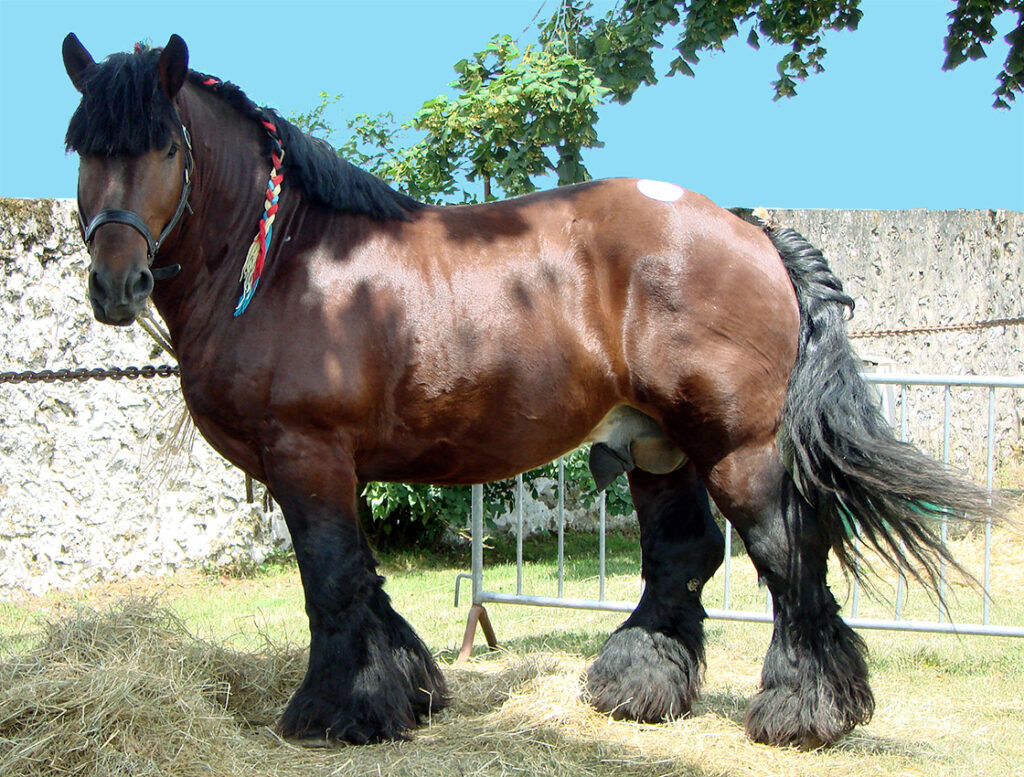The Ardennes horse
This draught horse, native to the departments of Meurthe-et-Moselle and the Ardennes, is said to be descended from the prehistoric horse of Solutré. Over the centuries, it has received infusions of oriental blood, giving it strength, nerve impulses, finesse, and endurance.

Caractère et aptitudes du cheval
In the 17th and 18th centuries, the royal and imperial armies used Ardennes horses for their cavalry and artillery, where they distinguished themselves during the Russian campaign for their resistance to the cold. In the 19th century, a large number of Belgian draught horses were successively added, followed by Thoroughbreds and finally Percherons and Boulonnais. The Studbook was created in 1888 by the “Société Hippique des Ardennes” (Ardenne horse-riding society). During the First World War, the Ardennais suffered heavy losses. Crossed with the Nord Draft horse, it participated in the creation of the Auxois. This very docile, calm, and gentle horse has a good character. It is strong, vigorous, and rustic. The gaits are supple, elastic, free and powerful. The action is fast, energetic.
Utilisations du cheval
The horse is used for agricultural work, for skidding in the forest and for harnessed tourism.
Morphologie du cheval
Dry head cambered or straight. Wide and open nostrils. Small ears pointed forward. Eyes large, prominent, gray. Body of short in type, dense, powerful, wide, close to the ground. Neck moderately long, reddish in the male. Withers out. Sloping shoulder. Prominent, wide chest. Chest ample, deep, close to the ground. Short back. Loin short, strongly muscled. Croup generally double, moderately sloping. Wide hips. Very muscular buttocks. Limbs short, strong, lean. Tendons well detached. Wide joints. Arms, thighs, and legs very muscular. Feet with healthy horns. Preferred coats: roan, aubera, iron grey, burnt or dark chestnut, bay. Tolerated coats: brown bay, light chestnut, Isabelle. Excluded dresses: black, dapple gray and all other colors. Size: maximum 1.62 m for males; 1.60 m for females.
To provide the ideal feed for your sport and leisure horse, discover Royal Horse’s S-200 and C-200 complementary pelleted feeds!


